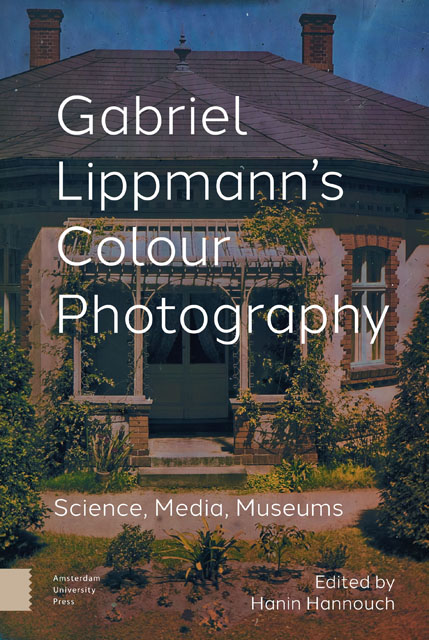Book contents
- Frontmatter
- Table of contents
- Gabriel Lippmann’s Colour Photography: A Critical Introduction
- Part I The Science of Colour Photography and the Colour Photography of Science
- Part II Media History, Aesthetics, and Culture
- Part III Contemporary Reception and Future Trajectories
- Afterword: Building Bridges over Standing Waves
- Index
7 - Brilliant! Enthusiasm for the Aesthetic Qualities of Lippmann’s Interferential Photography
Published online by Cambridge University Press: 16 November 2022
- Frontmatter
- Table of contents
- Gabriel Lippmann’s Colour Photography: A Critical Introduction
- Part I The Science of Colour Photography and the Colour Photography of Science
- Part II Media History, Aesthetics, and Culture
- Part III Contemporary Reception and Future Trajectories
- Afterword: Building Bridges over Standing Waves
- Index
Summary
Abstract
In 1908 Edward Steichen wrote in Camera Work: “… we must not forget Professor Lippmann, who gave us what is undoubtedly the most wonderful process of colour photography.” Comparing the striking colour to that of a good Renoir, Steichen placed aesthetic value on the photographs and yet, the Lippmann method is remembered primarily for its scientific value and for its failure as a stunning but impractical process. This chapter resituates the Lippmann process as a visually compelling object by examining what its practitioners thought about it, where they exhibited the plates and how they were received. Lippmann photographs represent more than difficult science. They were the product of a diverse web of scientists, artists, and photographers all seeking to advance colour photography.
Keywords: Gabriel Lippmann, Edward Steichen, Josef-Maria Eder, art history, aesthetics, interferential colour photography
For the first time, in 1908, the high-quality photographic art journal Camera Work dedicated its pages to colour photography. It was not the only journal to do so. The Studio, a British art photography journal, also published a special summer issue celebrating colour photography. These two issues showcased the autochrome, a colour process that relied on dyed grains of potato starch for its vivid colour. Within a year of its marketing, artistic photographers such as Heinrich Kühn (1866–1944), Baron de Meyer (1868–1946), and Alvin Langdon Coburn (1882–1966) were making their own autochromes, which were then reproduced in these volumes via a four-colour halftone process. The autochrome, however, was not the first colour method to be reproduced, nor was it the first to have commercial application. Among the many different solutions for colour photography, Gabriel Lippmann's interferential colour process had already emerged triumphantly, as it dazzled the eye and caught the imagination of scientists and viewers alike. It was introduced into the market as a viable process and yet its success, if one can even call it that, was short-lived.
Only referencing Lippmann's interferential photography in passing, both Camera Work and The Studio introduced the nascent history of colour photography by explaining the myriad attempts to reproduce colour. Writing for Camera Work, Edward Steichen declared, “[…] we must not forget Professor Lippmann, who gave us what is undoubtedly the most wonderful process of color photography” (Steichen 1908, 14).
- Type
- Chapter
- Information
- Gabriel Lippmann's Colour PhotographyScience, Media, Museums, pp. 185 - 198Publisher: Amsterdam University PressPrint publication year: 2022



